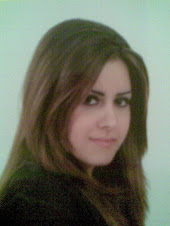
Nonsteroidal Antiinflammatory Drugs (NSAIDs)
What are NSAID's and how do they work?
Prostaglandins are a family of chemicals that are produced by the cells of the body and have several important functions. They promote inflammation, pain, and fever; support the blood clotting function of platelets; and protect the lining of the stomach from the damaging effects of acid.
Prostaglandins are produced within the body's cells by the enzyme cyclooxygenase (COX). There are two COX enzymes, COX-1 and COX-2. Both enzymes produce prostaglandins that promote inflammation, pain, and fever. However, only COX-1 produces prostaglandins that support platelets and protect the stomach. Nonsteroidal antiinflammatory drugs (NSAIDs) block the COX enzymes and reduce prostaglandins throughout the body. As a consequence, ongoing inflammation, pain, and fever are reduced. Since the prostaglandins that protect the stomach and support platelets and blood clotting also are reduced, NSAIDs can cause ulcers in the stomach and promote bleeding.
For what conditions are NSAIDs used?
NSAIDs are used primarily to treat inflammation, mild to moderate pain, and fever. Specific uses include the treatment of headaches, arthritis, sports injuries, andmenstrual cramps. Ketorolac (Toradol) is only used for short-term treatment of moderately severe acute pain that otherwise would be treated with opioids. Aspirin (also an NSAID) is used to inhibit the clotting of blood and prevent strokes and heart attacks in individuals at high risk. NSAIDs also are included in many cold and allergy preparations.
Are there any differences between NSAIDs?
NSAIDs vary in their potency, duration of action, how they are eliminated from the body, how strongly they inhibit COX-1 and their tendency to cause ulcers and promote bleeding. The more an NSAID blocks COX-1, the greater is its tendency to cause ulcers and promote bleeding. One NSAID, celecoxib (Celebrex), blocks COX-2 but has little effect on COX-1, and is therefore further classified as a selective COX-2 inhibitor. Selective COX-2 inhibitors cause less bleeding and fewer ulcers than other NSAIDs.
Aspirin is a unique NSAID, not only because of its many uses, but because it is the only NSAID that inhibits the clotting of blood for a prolonged period (4 to 7 days). This prolonged effect of aspirin makes it an ideal drug for preventing blood clots that cause heart attacks and strokes.
Most NSAIDs inhibit the clotting of blood for only a few hours. Ketorolac (Toradol) is a very potent NSAID and is used for moderately severe acute pain that usually requires narcotics. Ketorolac causes ulcers more frequently than other NSAID. Therefore, it is not used for more than five days. Although NSAIDs have a similar mechanism of action, individuals who do not respond to one NSAID may respond to another.


.jpg)